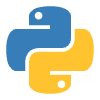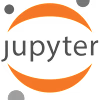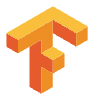Data Science Freelancers: Where the Top 1% Hide Their Profiles

Data Science Freelancers: Where the Top 1% Hide Their Profiles
Why Elite Data Scientists Are Out of Sight
Steps to Find the Top 1%
1. Focus on Specialized Platforms
2. Develop Strong Relationships
3. Inspect Real Projects
Tools Elite Freelancers Love
Pitfalls Clients and Freelancers Must Avoid
My Perspective as a Career Consultant on Contra
Frequently Asked Questions about Data Science Freelancers
How much do data scientists charge per hour?
Do freelance data scientists handle sensitive data securely?
Are certification programs worth it for data scientists?
Is it possible to hire data scientists on short notice?
Where to Go Next
Data Science Freelancers: Where the Top 1% Hide Their Profiles
Why Elite Data Scientists Are Out of Sight
Steps to Find the Top 1%
1. Focus on Specialized Platforms
“Most people are trying to find talent in malls. The best work out of private studios.” 🎧
2. Develop Strong Relationships
3. Inspect Real Projects
Tools Elite Freelancers Love
“The best freelancers don’t ask what tool you use—they ask what problem you’re solving.”
Pitfalls Clients and Freelancers Must Avoid
My Perspective as a Career Consultant on Contra
“Clients don’t remember what language you used—they remember what changed.”
Frequently Asked Questions about Data Science Freelancers
How much do data scientists charge per hour?
Do freelance data scientists handle sensitive data securely?
“If the data’s in a spreadsheet on Google Drive, it’s already out of scope.” 🔒
Are certification programs worth it for data scientists?
“Certs are like gym memberships. Having one doesn’t mean you know how to lift.” 🏋️
Is it possible to hire data scientists on short notice?
“You can find someone fast, or you can find someone great. Sometimes, you get both—if your brief is tight.” 🕒
Where to Go Next
Posted Apr 14, 2025
Data science freelancers from the top 1 percent rarely list public profiles. Learn where elite talent hides and how clients actually find them.











